10 Tall Flowers That Will Take Your Garden to New Heights
- Oops!Something went wrong.Please try again later.
Go big with these attention-grabbing beauties.
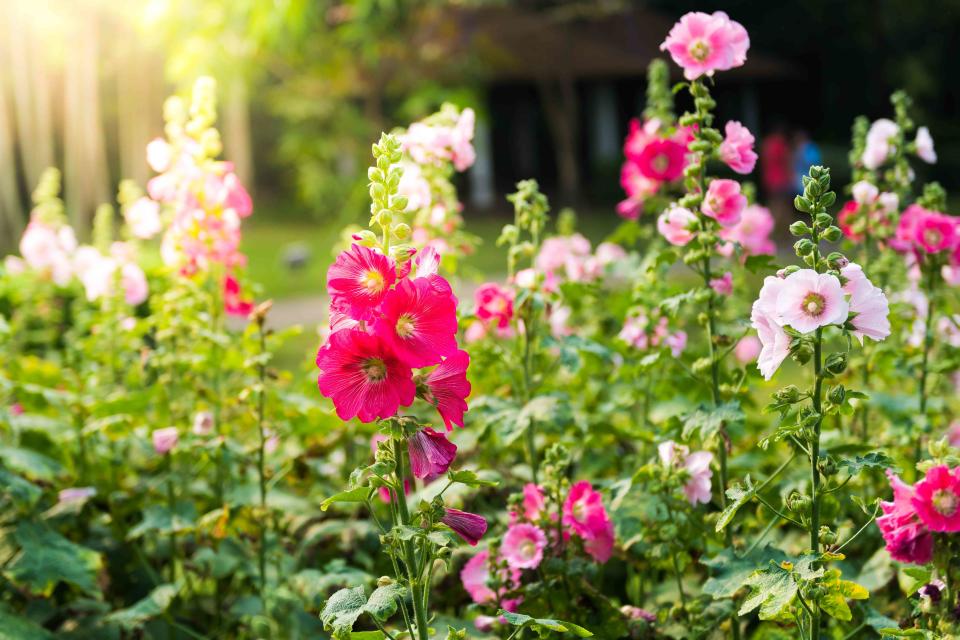
nipastock / GETTY IMAGES
Tall flowers bring so much drama to a landscape. You can plant them to establish a garden focal point, create a living backdrop for other plants, or offer a bit of privacy alongside a patio or bench.
Choose tall grasses with colorful flowering plumes that bend in the wind, and you'll have an invitation to take a moment in a hammock, says landscape designer Jane Gates of Southborough, Mass. Pick tall plants that bloom in bold "architectural" angles, and you'll create a visual pause, says Mark Dwyer, garden manager of The Healing Garden at Edgerton Hospital in Janesville, Wis. "Our eye travels through a landscape in a garden absorbing texture," he says. "And it's those uprights—those narrow grasses and vertical flowers—that slow the eye and make us appreciate the scene."
Ready to get some tall flowers growing? These 10 are among Gates and Dwyer's favorites.
Related: 11 Flowering Plants That Look Beautiful Even When They're Not Blooming
Artichoke
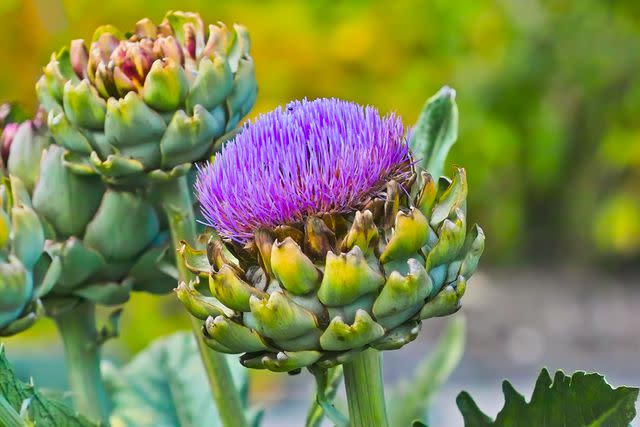
Werner Meidinger / GETTY IMAGES
Choosing artichokes for their flowers? Go for it, says Gates. "The buds open up into these incredible, giant, electric, indigo-paintbrush flower blooms," she says. Make plenty of room for this tall flowering plant. Mature ones are both tall and wide. Allow the blooms to go to seed for repeat performances, she adds.
Zones: 8 to 10 (grown as an annual elsewhere, where it will reseed)
Size: 3 to 8 feet tall x 5 to 6 feet wide
Growing conditions: sun to full sun; well-draining soil
Fairy Candle
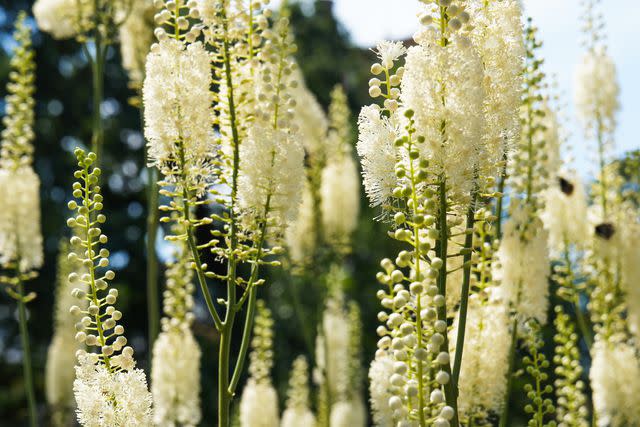
skymoon13 / GETTY IMAGES
You can't beat Cimicifuga (syn. Actaea) simplex in a moonlit garden, Dwyer says. He peppers this woodland plant through shaded areas, where its white spikes—at 4 to 6 feet tall—seem almost illuminated. Planted among dark-hued flowers, their impact is even more dramatic. "As dusk approaches, the darker flowers fade out, and it's the whites like this Cimicifuga that seem to literally glow," he says.
Zones: 3 to 8
Size: 4 to 6 feet tall x 2 to 4 feet wide
Growing conditions: part sun, shade; well-draining soil
Hollyhock
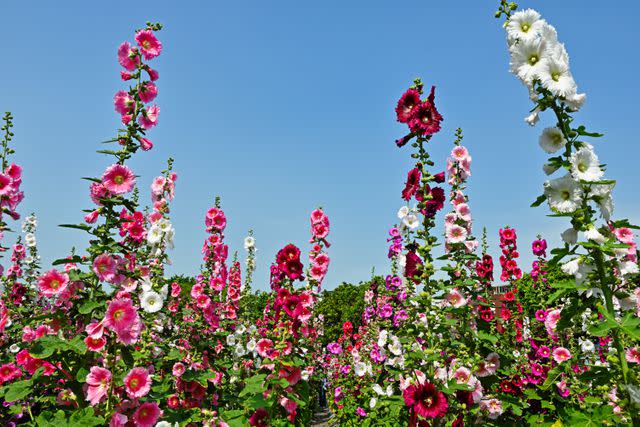
Lcc54613 / GETTY IMAGES
Alcea comes in 60 different species, many reaching as tall as 8 feet. Its big, beautiful flowers often open simultaneously, creating columns of blooms that cottage gardeners adore. Plant sweet peas among your hollyhocks and the smaller plants will wind around the bigger ones as they grow, giving you two plants that work visually as one, Gates says.
Zones: 2 to 10
Size: 3 to 8 feet tall x 1 to 3 feet wide
Growing conditions: full sun; well-draining soil (but will tolerate clay, silt, or sand)
Japanese Anemone "Honorene Jobert"
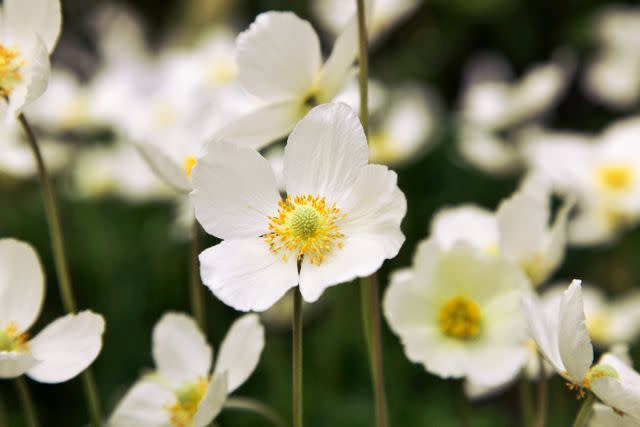
Imagesines / GETTY IMAGES
Also known as windflowers, Anemone hybrida—herbaceous members of the buttercup family—bloom from late summer into fall. The Honorene Jobert cultivar is notable for its long-blooming white flowers with yellow centers, says Dwyer. "You get about two months of blooms hovering on a three-to four-foot-tall, sometimes even a five-foot-tall, plant," he says. "When the garden is kind of waning in later summer, you get this crystal clear white just kind of popping out in the garden."
Zones: 4 to 8
Size: 3 to 5 feet tall x 1 ½ to 2 feet wide
Growing conditions: full sun to part shade; rich, well-draining soil
Korean Angelica
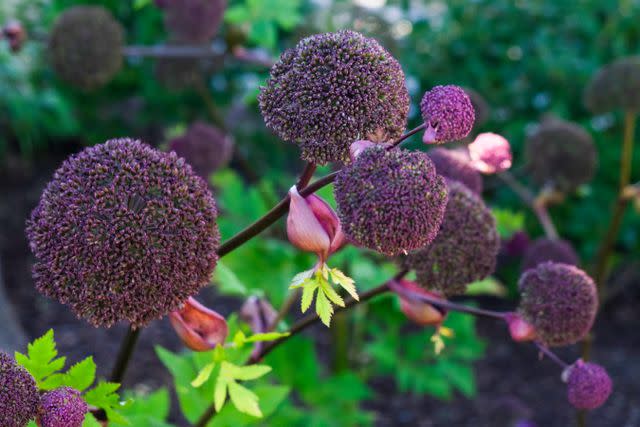
John Burke / GETTY IMAGES
This hardy herb can grow to 6 feet tall, producing reddish-purple flower clusters "hovering on a very subtropical-looking plant," Dwyer says. "And once the flowers fade, you have the drying hovering spheres, which is amazing flower architecture in the garden."
Angelica gigas is a biennial, but you can often buy it in its second year to enjoy flowers right away. Plants will self-sow, but you can also tuck in new plants every year to keep the impact going strong.
Zones: 5 to 9
Size: 4 to 6 feet tall x 1 ½ to 2 feet wide
Growing conditions: full sun to partial shade; moist, well-draining soil
Definition
Biennial plants take two seasons to flower (and die post-bloom).
Meadow Rue "Lavender Mist"
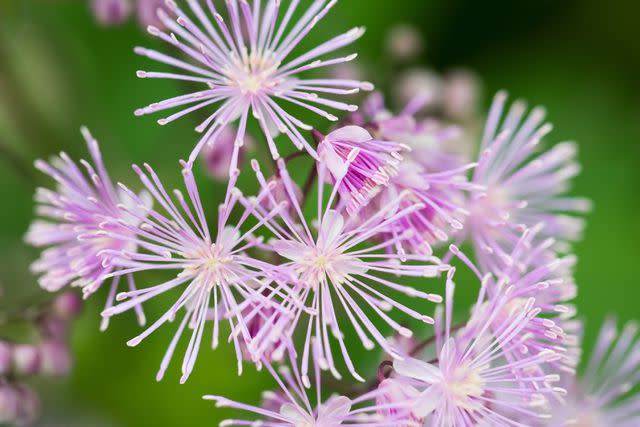
skhoward / GETTY IMAGES
Thalictrum rochebrunianum produces tall, strong stems topped with wispy blooms that "float above whatever composition you put it in," Dwyer says. Delicate blue-green foliage adds to the ethereal aura of this early summer bloomer, its lavender haze not transparent but light enough to allow glimpses of its neighbors in the garden. "Catalogs all list it at 6 to 8 feet," Dwyer says, "but I've seen it grow ten feet tall."
Zones: 4 to 7
Size: 6 to 8 feet tall x 2 to 3 feet wide
Growing conditions: full sun or part shade; well-draining soil
Pampas Grass
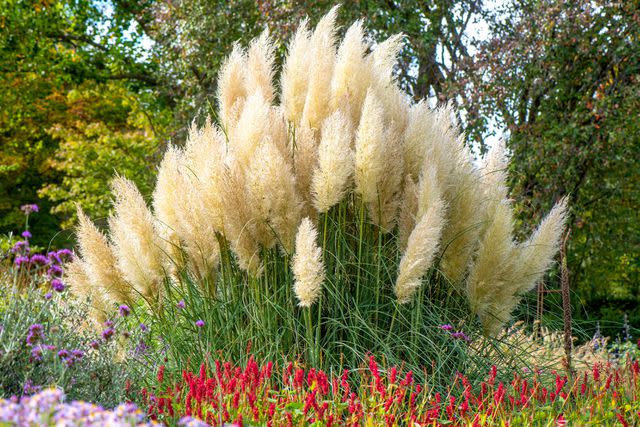
Jacky Parker Photography / GETTY IMAGES
Wind-pollenated grasses don't need showy flowers to attract pollinators and instead bloom in fluffy plumes called inflorescences. "The thing about some of these taller grasses is that they are like watching a belly dancer," Gates says. "They bend and they weave, and they twist and they jingle in the wind. They add motion to the garden. They make it alive." Pampas grasses also make excellent screens and help control erosion on slopes.
Zones: 7 to 10
Size: 3 to 8 feet tall x 4 to 8 feet wide
Growing conditions: full sun; well-draining soil
Several cultivars of Cortaderias selloana (including Pumila, Rosea, Silver Comet, and Gold Band) are considered invasive in several North American states—particularly across zones 7 through 11. Check planting regulations in your area before adding it to your landscape or consider a native alternative.
Red Hot Poker
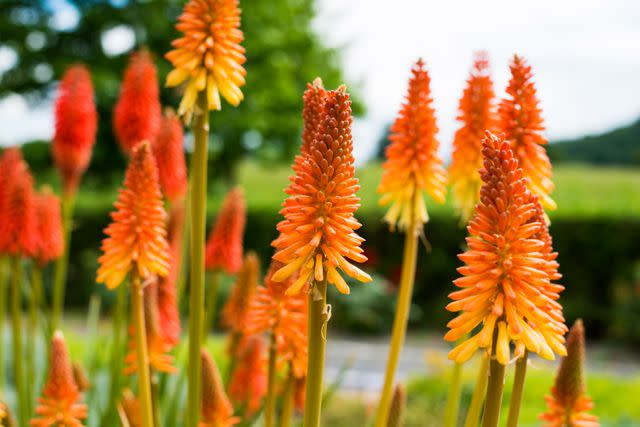
Kerrick / GETTY IMAGES
Showstopping Kniphofia and its cousin Regal Torchlily (Kniphofia caulescens) get their common names from poker-shaped spikes in gradient shades of yellow, orange, and red. There are more than 60 species, including Kniphofia uvaria, which reaches 3 to 4 feet in height. Plant them against a fence or hedge to showcase their cool, spiky blooms, "or parade them around in a straight line like little soldiers," Gates says.
Zone: 5 to 9
Size: 3 to 4 feet tall x 2 to 3 feet wide
Growing conditions: full sun; well-drained soil
Sweet Coneflower "Henry Eilers"
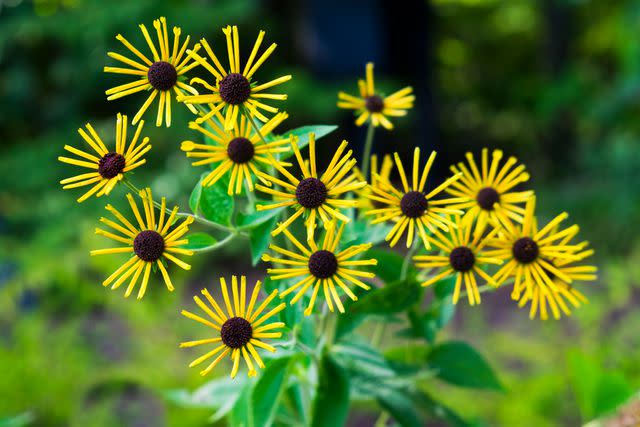
John Burke / GETTY IMAGES
If flowers were typography, Rudbeckia subtomentosa Henry Eilers would be an asterisk—that little star social media users have commandeered as a way of showing emphasis. With its tubular petals and girthy size, this cultivar is definitely an attention-getter. "It can be top-heavy in bloom, so I like having it with supportive neighbors," says Dwyer. Think things like ironweed or native ornamental grasses like Big Bluestem or Indian grass that help hold it upright.
Zones: 4 to 8
Size: 3 to 5 feet tall x 1 to 2 feet wide
Growing conditions: full sun; well-draining soil
White Mugwort "Guizhou"
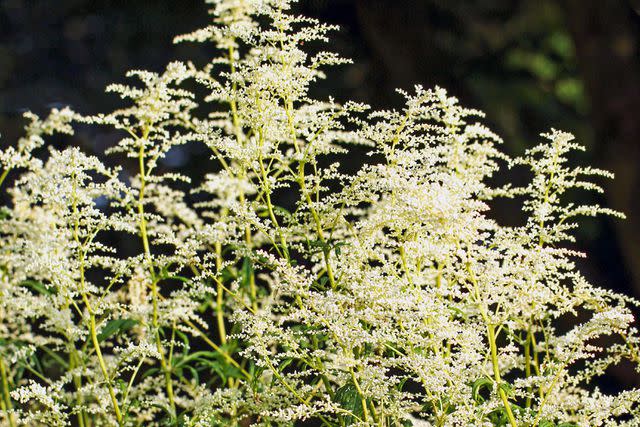
fotolinchen / GETTY IMAGES
Artemisia lactiflora produces thousands of tiny late-summer flowers that form an "amazing, wispy haze of white" at waist and even chest height, Dwyer says. Its dark foliage pumps up the drama even further. "White is a color that I think is underutilized in the garden in general, and it unifies, whether it's a hot color scheme or a cool color scheme," he says.
Zones: 3 to 8
Size: 4 to 5 feet tall x 2 to 3 feet wide
Growing conditions: full sun; rich, moist, well-draining soil

